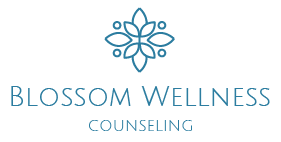Blog
Blog

How to Set Personal and Professional Goals for Work-Life Balance
Are you a goal-getter? If you've ever found yourself caught in the whirlwind of work, family, and personal responsibilities, you know that achieving a balance between your professional and personal life is no small feat. The secret weapon in this endeavor? Setting clear, achievable goals. Defining personal and professional goals can be your compass to travel the often challenging terrain of work-life balance.
Why Goals Matter in Work-Life Balance
Imagine setting sail on a journey without a destination in mind. It's a bit like trying to find that balance between work and life without clear goals. Goals provide direction, purpose, and a roadmap for your efforts. When you have a vision of where you want to go, it becomes easier to make choices that align with your priorities.
How to Set Personal Goals
Step 1: Reflect on Your Values and Passions
Personal goals should be deeply rooted in your values and passions. Take some time to reflect on what truly matters to you. What activities bring you joy and fulfillment? What aspects of your personal life do you want to prioritize?
For example, if learning new skills is a core value, a personal goal could be to have a regular time to study or dedicate weekends to train yourself. Align your personal goals with your values to create a path that represents you.
Step 2: Make Goals Specific, Measurable, Achievable, Relevant, and Time-Bound (SMART)
The SMART criteria are your best friends when it comes to setting effective goals. Make sure your personal goals are:
Specific – Clearly define what you want to achieve.
Measurable – Establish concrete criteria to track your progress.
Achievable – Set goals that are challenging yet attainable.
Relevant – Ensure your goals align with your values and priorities.
Time-Bound – Specify a timeframe for achieving each goal.
For instance, if your goal is to lose weight, a SMART goal could be to walk for 30 minutes five days a week for the next three months. This goal is specific (30 minutes of walking), measurable (five days a week), achievable (based on your schedule), relevant (lose weight), and time-bound (three months).
Step 3: Break Goals into Manageable Steps
Large goals can be overwhelming, so break them down into smaller, more manageable steps. This not only makes the process less daunting but also allows you to celebrate small victories along the way.
How to Set Professional Goals
Step 1: Identify Your Career Aspirations
Just as personal goals stem from your values, professional goals should align with your career aspirations. Ask yourself where you see your career headed. What skills do you want to develop? Are there specific achievements or milestones you want to reach?
For example, if you aspire to move into a leadership role, a professional goal could be to complete a leadership training program or take on a mentorship role within your organization.
Step 2: Apply the SMART Criteria to Professional Goals
Once again, the SMART criteria come into play. (Refer to Step 2 of “How to Set Personal Goals”).
Step 3: Create an Action Plan
Breaking down professional goals into actionable steps is crucial for success. Identify the skills or knowledge you need to acquire, the tasks you must complete, and the resources available to you.
Finding Harmony in Your Personal and Professional Goals
Now that you've set your personal and professional goals, the magic happens when you integrate them to create a harmonious life. Here are a few tips to bring it all together:
1. Prioritize Your Goals
Recognize that not all goals are created equal. Some may be more time-sensitive or critical than the others. Prioritize your goals based on their importance and relevance to your current circumstances.
2. Schedule Regular Check-Ins
Life is dynamic, and your goals may need adjustment along the way. Schedule regular check-ins with yourself to reflect on your progress, reassess your priorities, and make any necessary modifications to your goals.
3. Learn to Delegate and Say No
Achieving balance often involves learning to delegate tasks and saying no when necessary. If work is consuming too much of your time, consider redistributing responsibilities. Saying no to non-essential commitments frees up time for activities that align with your goals.
4. Be Flexible
Life is unpredictable and goals may need to be adapted to accommodate unexpected challenges or opportunities. Be flexible and view adjustments as part of the journey rather than setbacks.
In the grand scheme of things, setting personal and professional goals isn't just about achieving specific outcomes; it's about crafting a life that reflects your values, passions, and aspirations. So, go ahead, define your destination, chart your course, and set sail on the journey to a balanced and fulfilling life.
Get the support you need to create calm confidence that lasts
Get the support you need to create calm confidence that lasts
Copyright@2023 Blossom Wellness Spa, Inc.
Copyright@2023 Blossom Wellness Spa, Inc.



